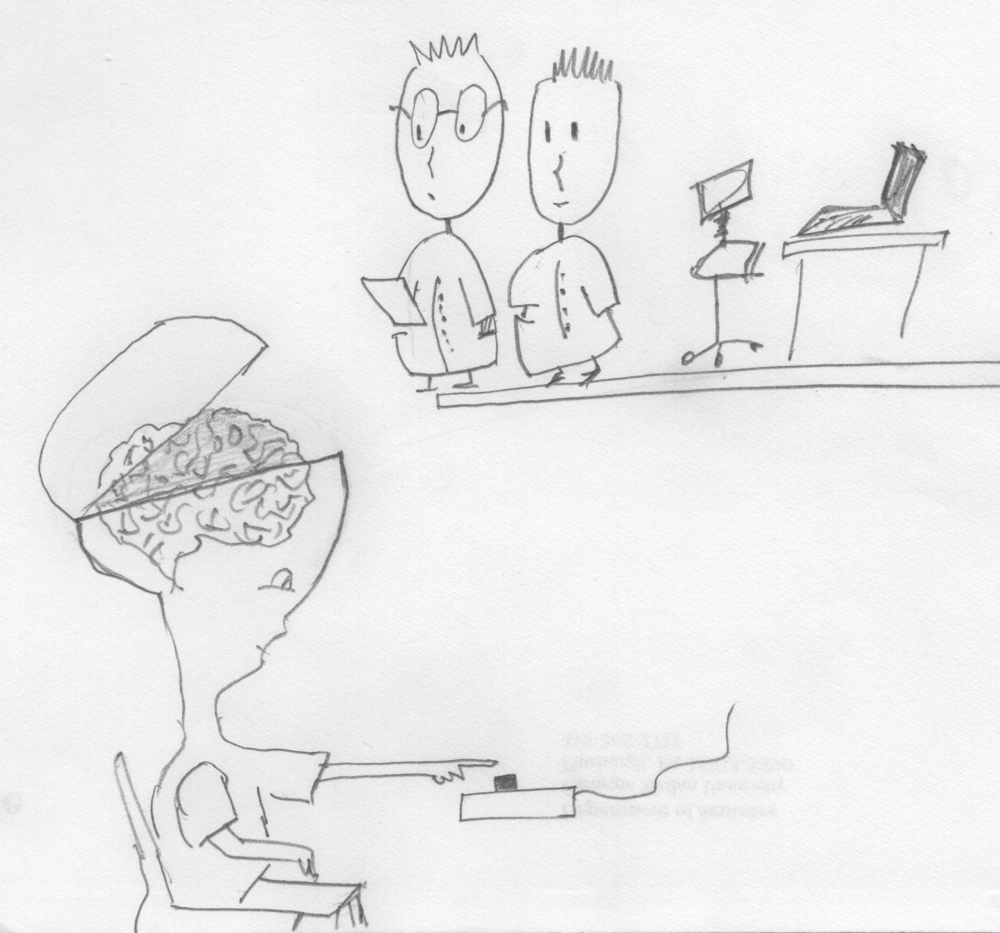About our research
 Credit: Sonya Todorova
Credit: Sonya Todorova
Broadly speaking, our laboratory investigates how sensory feedback impacts the neural representation of motor intent. One of the major tools we use is the brain-computer interface (BCI). These devices allow us to tap into the output of a network of neurons and use that recorded activity to directly drive a device, like a computer cursor. By creating a defined link between neural activity and behavior, BCIs provide a unique window for probing brain processes that would otherwise remain covert, like learning, adaptation, and the dynamic evolution of the intent signal. Ultimately a basic understanding of these phenomena will not only inform us about the fundamental limits of motor control processes, but will also help propel the development of new neural prosthetic devices. Our research has two main thrusts. First, we develop novel computational and experimental techniques that leverage BCIs as a research tool for investigating the neural mechanisms of sensorimotor adaptation and skill acquisition. Second, we design new BCI decoding algorithms to enhance the performance of these devices and hasten their clinical translation.
The Neural Representation of Intent
Every movement we make initiates a cascade of neural computations: actual movements are compared to predicted outcomes, progress towards the goal is evaluated, and the expected reward is balanced against the expected effort required to obtain it. The results of these computations lead to adaptive changes in motor commands that attempt to optimize behavioral performance by maximizing reward and minimizing error and effort. How is this accomplished? Our work in this area is proceeding along several fronts, including credit-assignment learning (Jarosiewicz et al., 2008; Chase et al., 2012), internal model adaptation (Golub et al., 2015), and neural network constraints on learning (Sadtler et al., 2014).BCI Decoding Algorithms
We leverage the results of our basic science work to inform the design of novel brain-computer interface decoding algorithms whose goal is to increase the clinical utility of neural prostheses. In particular, our work leveraging BCIs to investigating motor learning has led us to a novel conception of BCI design. Although most statistical approaches assume that unbiased estimators will ultimately produce the best estimate of a given statistical quantity, under closed-loop BCI control, we have found that subjects compensate quite readily for at least certain kinds of bias (Chase et al., 2009; Koyama et al., 2010). This has led us to design a novel class of biased decoding algorithm that sacrifices statistical optimality for user controllability (Golub et al., 2014). Our current work along these lines is the development of a theoretical framework for designing decoding algorithms that leverage subject learning.Sponsors
- NSF (CAREER Award IOS1553252)
- NSF (Brain Initiative grant BCS1533672)
- NIH (CRCNS grant R01-HD071686)
- Craig H. Neilsen Foundation
- The Shurl and Kay Curci Foundation
- DARPA
- IARPA
- PA Department of Health Commonwealth Universal Research Enhancement (CURE) Program
- Carnegie Mellon BrainHub
